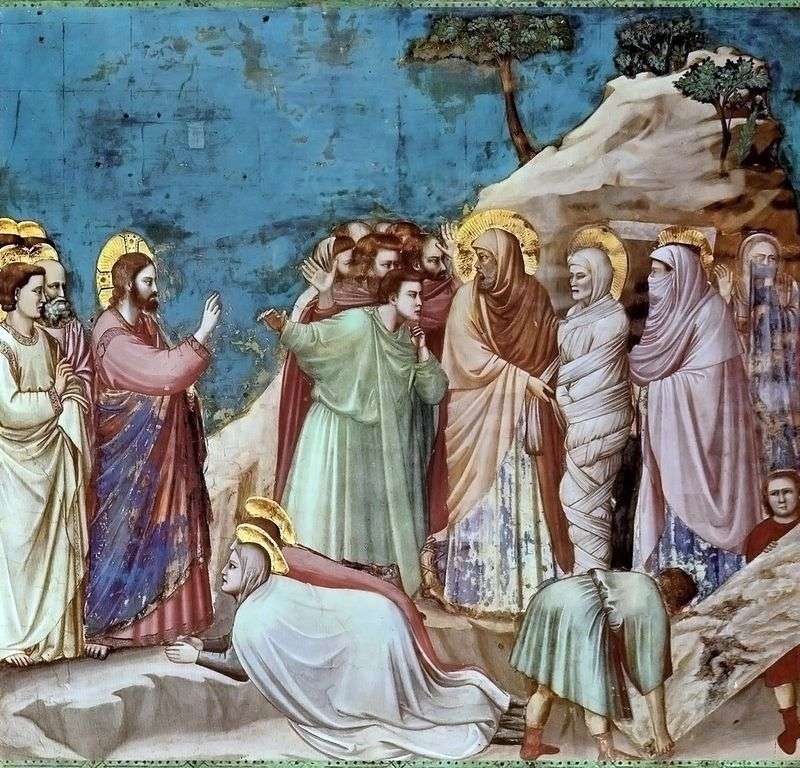
In his works, Giotto often chose this type of multi-figure, composition, where the main plot action is accompanied by many side events. At first glance, small and minor, they together represent an extremely significant background. Here, too, the greatness of the miraculous work of Christ is emphasized by the full astonishment and excitement of the faces of all present at the resurrection of Lazarus.
The dramatic plot reaches its climax, concentrating in depicting the sisters of Lazarus, Martha and Mary on their knees, in the faces and gestures of the witnesses of the miracle, but especially in the figure and in the outstretched hand of Jesus Christ.
As always with Giotto, the viewer appears to be at the epicenter of an extraordinary event. The figures of Christ and Lazarus himself are pushed to the edges of the composition, and the central place in it comes just to the witnesses of the miracle, who, with facial expressions and gestures, hasten to express the experiences that have gripped them – deep shock and fear.
About gestures should be said specifically. They seem to follow our chain along the whole composition scheme, from one figured group to another. The general movement begins the raised hand of the apostle to the left of Christ, continues – the hand of the Savior himself, from it as if the energy clothed in hands in a green garment receives a charge of energy, and, finally, the movement stops in the hand of the person supporting the risen Lazarus.
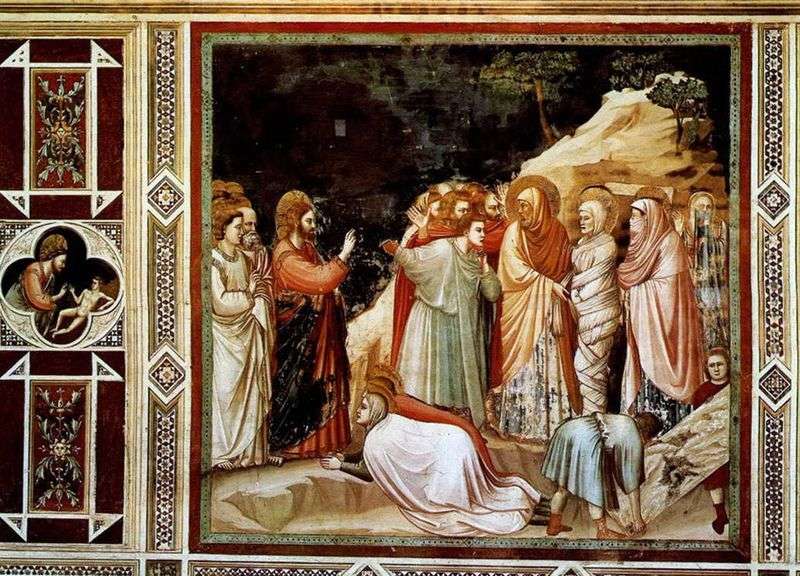 Resurrection of Lazarus by Giotto di Bondone
Resurrection of Lazarus by Giotto di Bondone Resurrection of Lazarus by Juan de Flandes
Resurrection of Lazarus by Juan de Flandes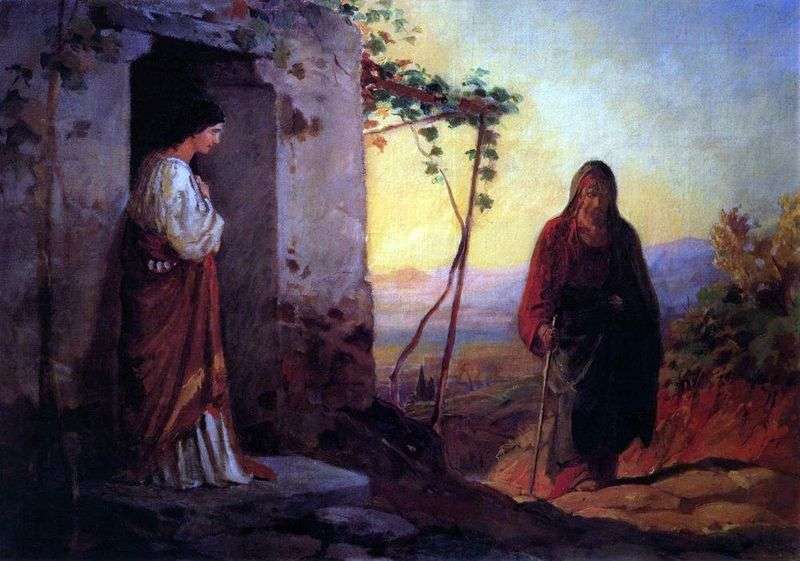 Mary, Sister of Lazarus, meets Jesus Christ, going to their house by Nikolay Ge
Mary, Sister of Lazarus, meets Jesus Christ, going to their house by Nikolay Ge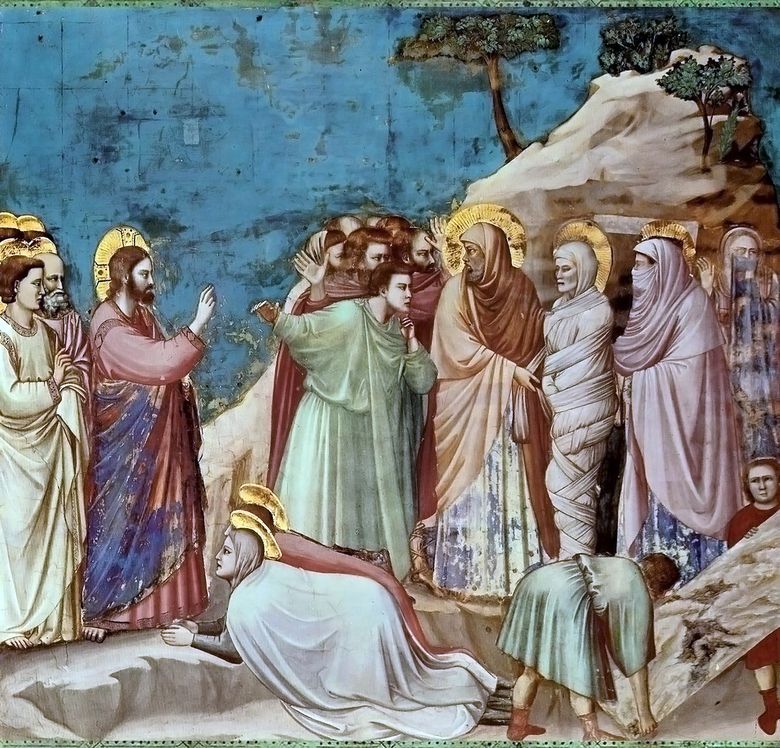 Résurrection de Lazare – Giotto
Résurrection de Lazare – Giotto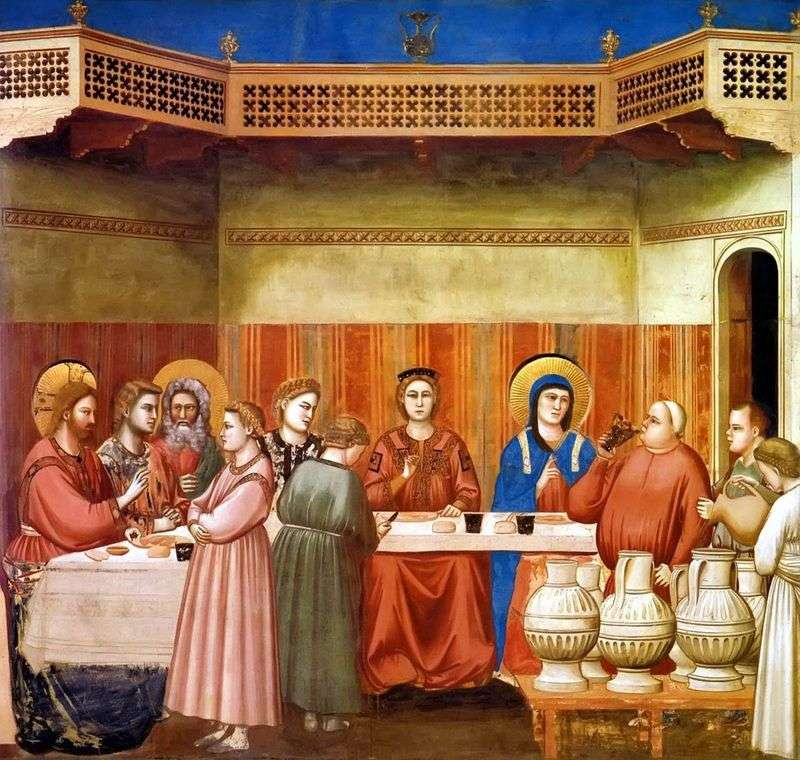 Marriage in Cana of Galilee by Giotto
Marriage in Cana of Galilee by Giotto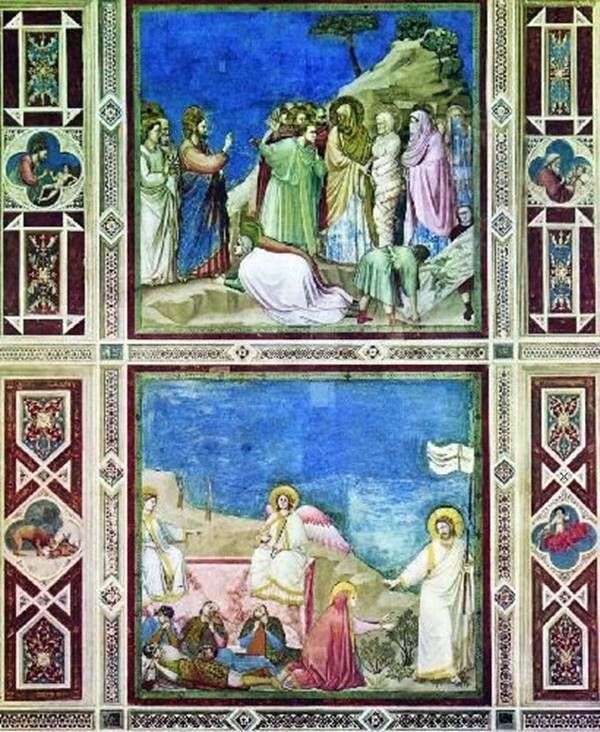 Paintings of the Capella del Arena by Giotto di Bondone
Paintings of the Capella del Arena by Giotto di Bondone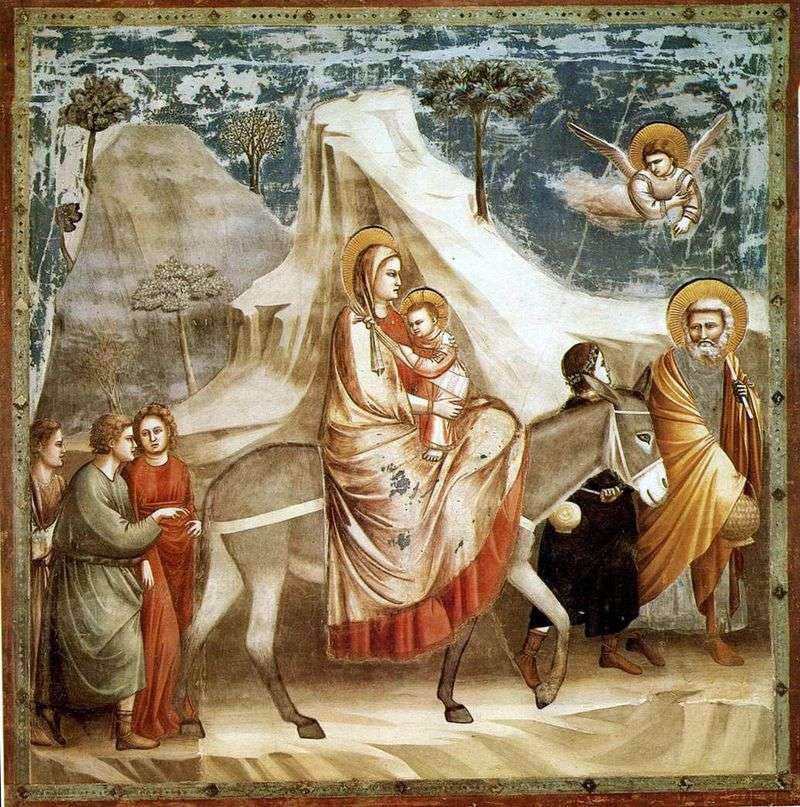 Escape to Egypt by Giotto
Escape to Egypt by Giotto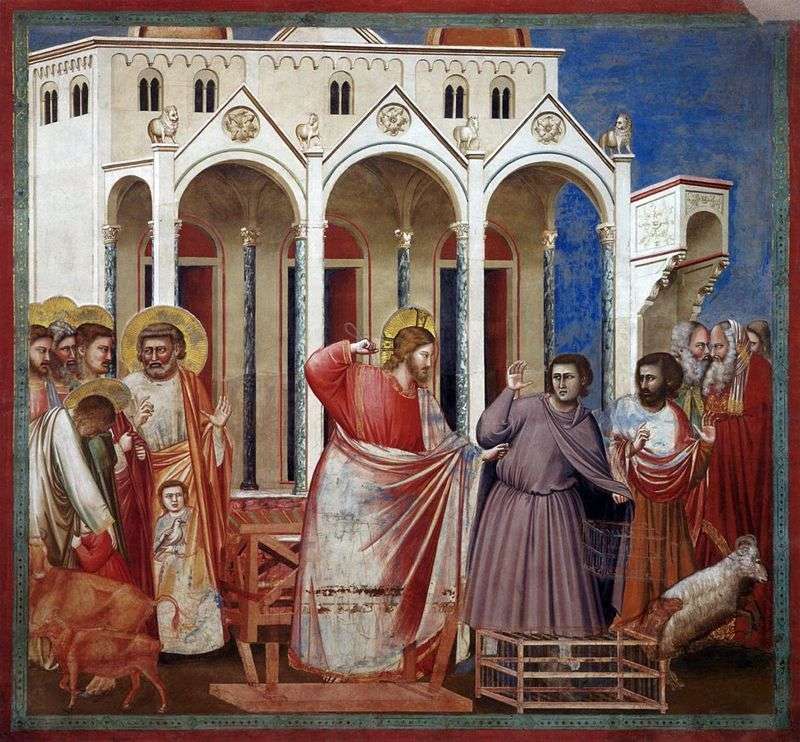 The expulsion of merchants from the temple by Giotto
The expulsion of merchants from the temple by Giotto